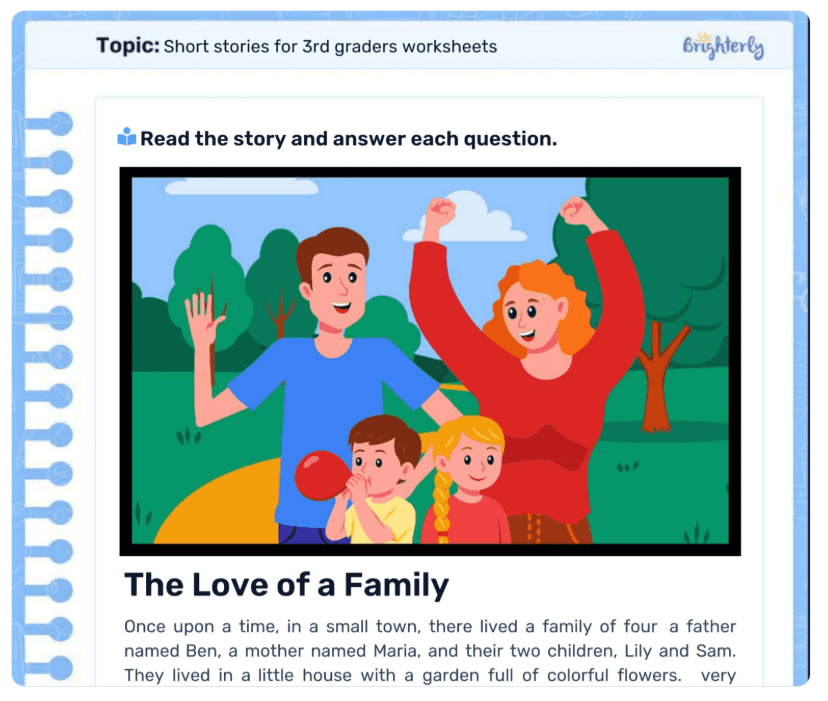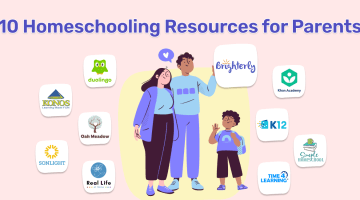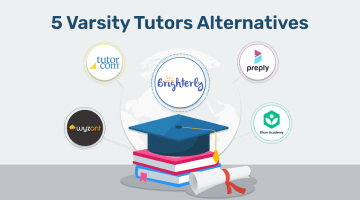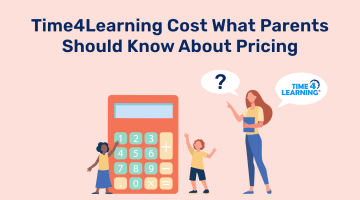12 Literacy Strategies for Struggling Readers
reviewed by Marvi M. Andres
Updated on November 13, 2025
Throughout my teaching practice, I’ve met children who fall behind their classmates in literacy learning. Often, they read slowly, skip letters, syllables, and struggle to connect sounds or understand what they read. In this article, I’ll share 12 proven literacy instruction strategies parents can apply to support their children. These strategies are also used by Brighterly reading tutors to help hesitant readers become voracious readers.
Key points:
- Evidence-based literacy strategies help children develop strong reading and writing skills from an early age.
- Some of the most popular activity types to use at home include worksheets, strategies for building vocabulary, graphic organizers, and integration of writing.
- Personalized 1:1 lessons of the Brighterly reading program make literacy learning engaging and highly efficient.
How to improve the literacy skills of elementary students?
To improve the literacy skills of elementary students, consistent support is necessary. Yet parents often can’t handle the challenge alone, and schools rarely provide an individual approach. That’s why using evidence-based literacy strategies that guide a child’s development is essential to help them progress at their own pace.
Literacy, or the ability to read and write, plays a huge role in a person’s life. However, 54% of US adults read below a 6th-grade level, and, unbelievably, 21% are illiterate. These numbers show why helping a child improve literacy as early as possible is a top priority. So, teaching literacy strategies from an early age is a must for parents who care about their child’s future, as it lays the foundation for critical thinking, curiosity, and lifelong success.
What are essential literacy strategies?
- Professional online instructions
- Phonics instruction
- Phonological awareness activities
- Building vocabulary
- Fluency practices
- Reading comprehension techniques
- Graphic organizers
- Guided reading
- Shared reading
- Independent reading
- Writing integration
- Parental involvement and support
Essential literacy strategies are practical methods that help kids read, write, and comprehend what they see on the page.
- Literacy strategies for reading include phonics, phonological awareness, fluency practice, vocabulary building, comprehension techniques, and technology-assisted learning.
- Literacy strategies for writing focus on integrating writing into reading activities, teaching kids to connect words they read with words they create.
Literacy strategy #1: Professional online instructions
Professional online instruction gives your child personal attention that schools often can’t provide. Skilled tutors don’t teach blindly, but build on prior knowledge and fill in possible gaps. Regular progress monitoring keeps everything on track, and research shows that 1:1 lessons work much better than group lessons or standard curriculum.
How to improve literacy skills with Brighterly tutors?
Brighterly math and reading platform is trusted by over 200,000 happy parents, who confirm that individual strategies for teaching literacy do help struggling readers. The platform offers 1:1 learning with tailored schedules and dedicated teachers who find the right approach for every child.
But what makes the Brighterly reading program so outstanding? Here are a few clues:
- They put a huge stress on personalization. So, each lesson your kid undergoes is strongly aligned with their personal requirements.
- At the same time, the Brighterly program matches the US state standards, so it reflects what your kid studies at school.
- It’s strongly rooted in gamification. Never letting a kid get bored — that’s the motto here.
Literacy strategy #2: Phonics instruction
Phonics instructions teach kids how letters and sounds connect to form words. When children understand how sounds map to print, reading becomes easier.

This technique works best when it’s multisensory, that is, involving touch, sight, sound, and movement, and when it’s interactive.
For example, you might let your child trace letters in sand while saying the sound aloud (like in the above picture). Or use magnetic letters to build simple words together. These multisensory experiences make learning stick and help struggling readers improve literacy skills faster.
Literacy strategy #3: Phonological awareness activities
Phonological awareness activities teach children to hear and play with the sounds in words. Think rhyming games, clapping out syllables, or finding words that start with the same sound. These simple strategies for teaching literacy strengthen sound recognition. You can also turn it into a game or sing rhyming songs.
Use phonological activities from Brighterly worksheets
Reading worksheets from Brighterly are great support materials for phonological training, and they are free! Choose and download those that match the topic and use them during reading sessions with your child at home.
What’s also notable is that those sheets are meant to match the school program. So, you can easily use them to master a specific topic or as standalone activities.
Literacy strategy #4: Building vocabulary
The bigger the word bank, the easier children understand what they read. So, as a parent, you should talk about new words while reading, ask questions, and play word games such as “Guess the Word.”
Note: Build vocabulary by using new words in daily talk. If your child learns the word ‘brilliant’, try saying, “That’s a brilliant idea!” or “Your drawing looks brilliant today!” This way, kids will remember words and improve literacy skills naturally through real-life use.
Literacy strategy #5: Fluency practice
Fluency practice builds smooth and expressive reading. Slow reading can make comprehension harder. So, to help your kid become more fluent, read aloud together, take turns, or even record and listen. Additionally, repeating texts helps words stick. These literacy strategies for reading focus kids on meaning rather than decoding.
Literacy Strategy #6: Reading comprehension techniques
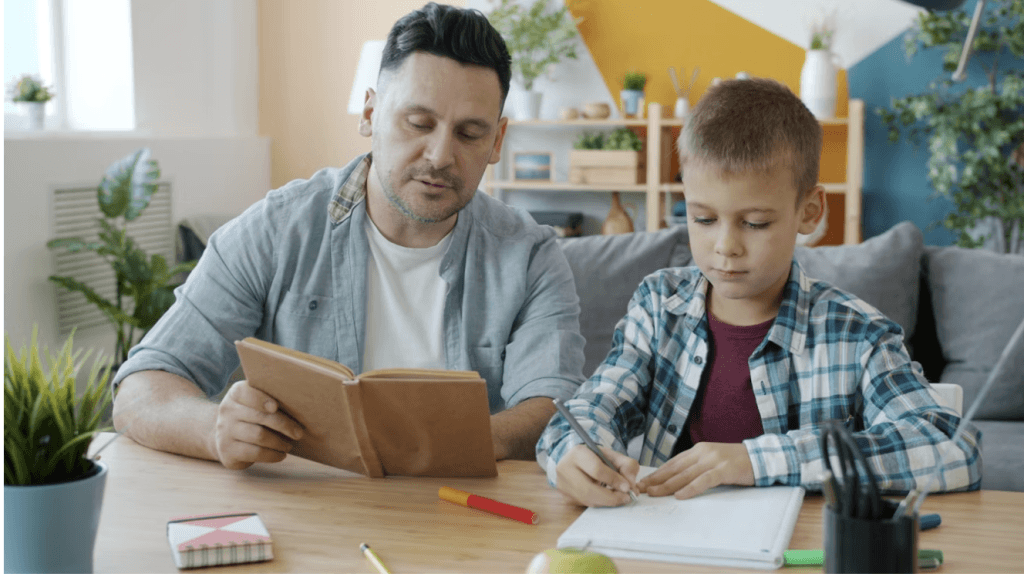
Comprehension is understanding what one reads. To help with it, encourage the child to predict what happens next, summarize a story, or draw what they read. Pause and discuss the story together. These literacy strategy examples help kids engage with text and comprehend it.
Note: According to Dr. Timothy Rasinski, an expert on reading fluency, the more actively a child engages with a story — asking questions, making predictions, and retelling in their own words — the stronger their comprehension and love for reading will grow.
Literacy strategy #7: Graphic organizers
Graphic organizers, such as story maps, Venn diagrams, and charts, are functional in organizing ideas. Kids can track characters, settings, and events using these tools.
Note: Venn diagrams are of special interest for improving literacy, as they are excellent for kids to compare and contrast diverse elements, visually showing what’s unique and what overlaps.
Literacy strategy #8: Guided reading
Guided reading means working with a child on short texts that match their level. Choose books that aren’t too easy but not too hard either. Sit together and read aloud, pausing to discuss what’s happening in the story and how the characters feel.
Literacy strategy #9: Shared reading
Shared reading means reading a book together with your child. You read aloud while your little one follows the words on the page. They can join in on favorite lines or repeated phrases. It’s one of the easiest literacy teaching strategies to try at home because it shows children how good reading sounds.
Note: Reading is usually more resultative when you know where to start. Ask a child to pass these reading tests according to their grade and get the results right away.
Literacy strategy #10: Independent reading
Independent reading means letting your child read on their own, with books they choose by themselves. This essential literacy strategy strengthens focus, vocabulary, and fluency, turning reading into something your child looks forward to every day.
Create a cozy reading corner at home and keep a small selection of books within reach. Change them from time to time to keep things exciting. Start with ten minutes a day and slowly increase the time. If your child stumbles on a word, give them time to figure it out. The purpose is to build a habit, not perfection.
Literacy strategy #11: Writing integration
Reading and writing grow together. Writing helps children understand what they read, remember new words, and express their own thoughts more clearly. So, answering the popular question of how to improve literacy skills, try to combine both of these elements.
After reading a story, ask your child to draw or write about their favorite part. They can change the ending, write a letter to a character, or make a mini book of their own.
Literacy strategy #12: Parental involvement and support
Parents’ encouragement is vital. Recent research shows that kids’ gains in literacy are directly connected with family involvement. Read together with your child, chat about stories, and stay in touch with teachers who can offer 1:1 guidance when needed, especially when school can’t provide individual instruction.
Conclusion
All kids learn to read at their own pace, just like they learn to walk at different times. If your child stumbles, give them all the support you can. If you practice at least some of the 12 literacy strategies with your child at home regularly, they’ll gain skills and confidence faster.
And remember that seeking help from professionals is always a good solution. Brighterly reading tutors fight the gaps left by one-size-fits-all school education and build a lifelong love of reading. Book free reading lesson and see all the benefits yourself!




